There are plenty of reasons for stocks to move lower – but the stock market is not listening just yet. Stocks are still overbought after a huge rally since mid November and the six month seasonal pattern is set to turn bearish in about a month. Elsewhere, there is concern in Europe, relative weakness in China, a strong Dollar, weakness in industrial metals and a two week surge in Treasuries. In spite of these factors, the S&P 500 ETF (SPY), S&P MidCap 400 SPDR (MDY) and Russell 2000 ETF (IWM) are all within spitting distance of 52-week highs. Stocks had a great excuse to sell off after a weak open on Wednesday, but the major index ETFs immediately firmed and stocks bounced after the lower open. As the PerfChart below shows, stocks, the Dollar and oil are the top intermarket performers this year. Oil was lagging last week, but decided the join the stock market with a big surge the last four days.
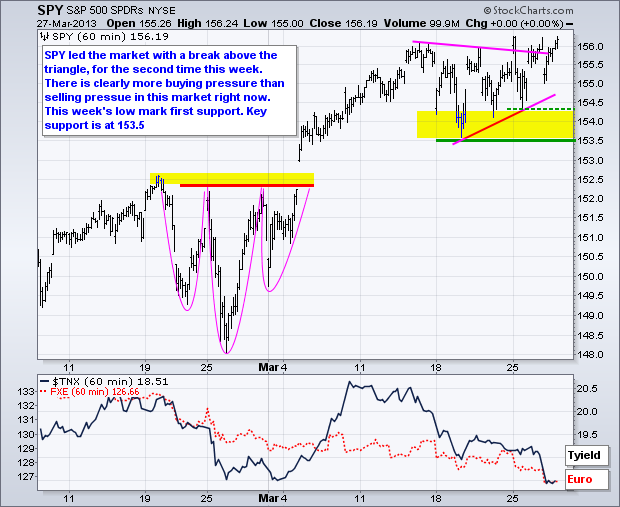
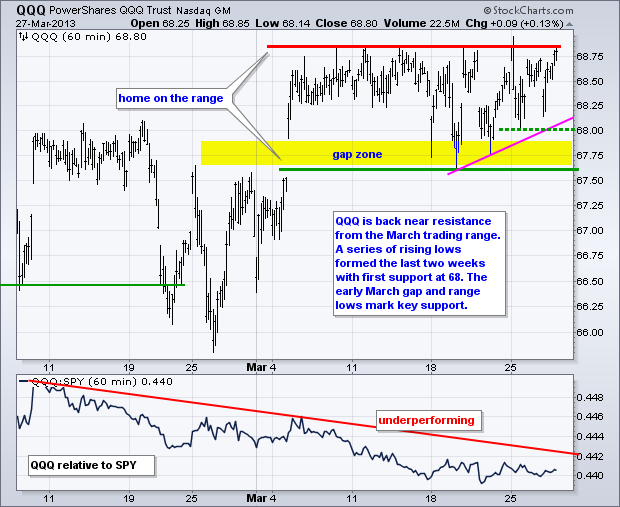
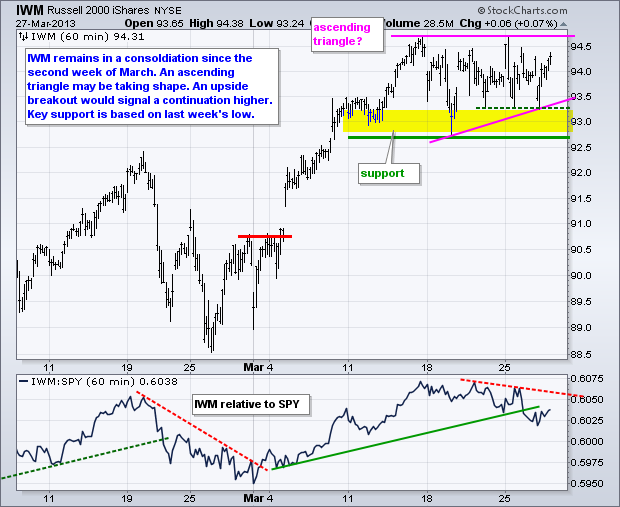
**************************************************************************
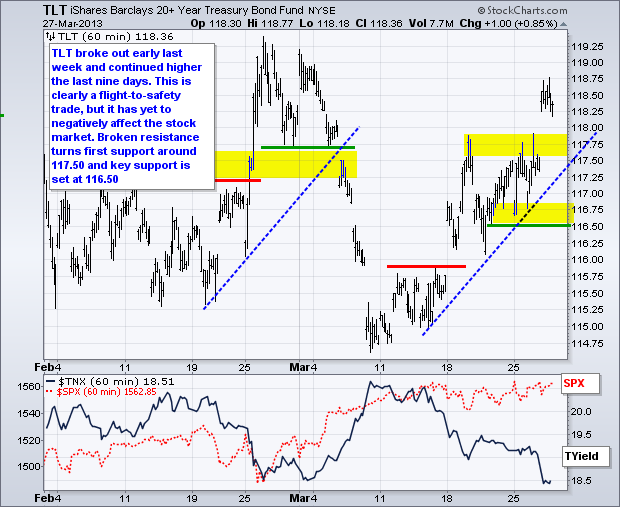
**************************************************************************
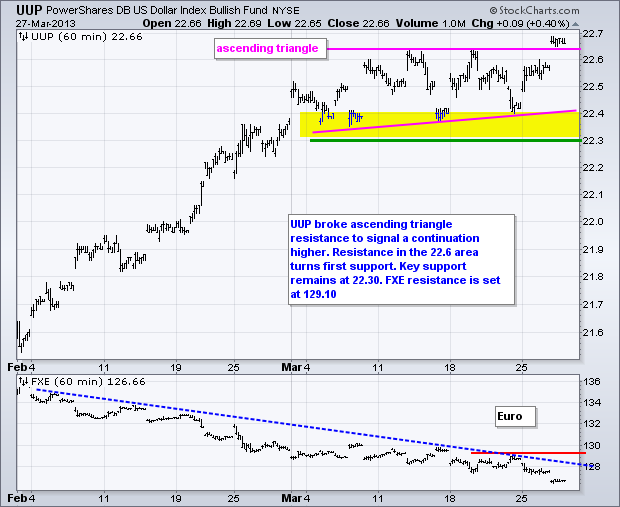
**************************************************************************
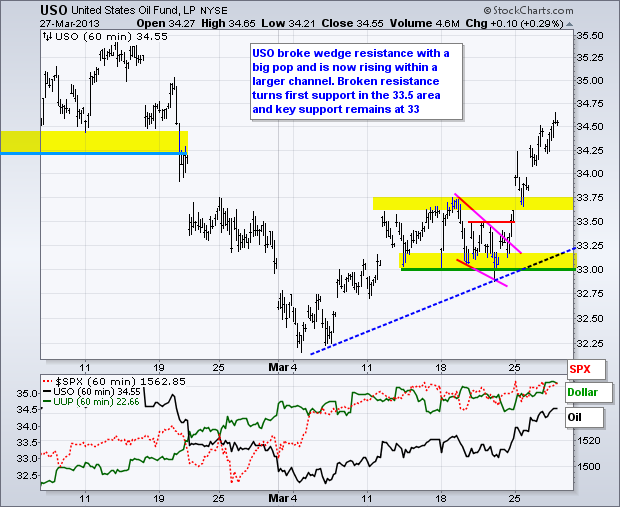
**************************************************************************
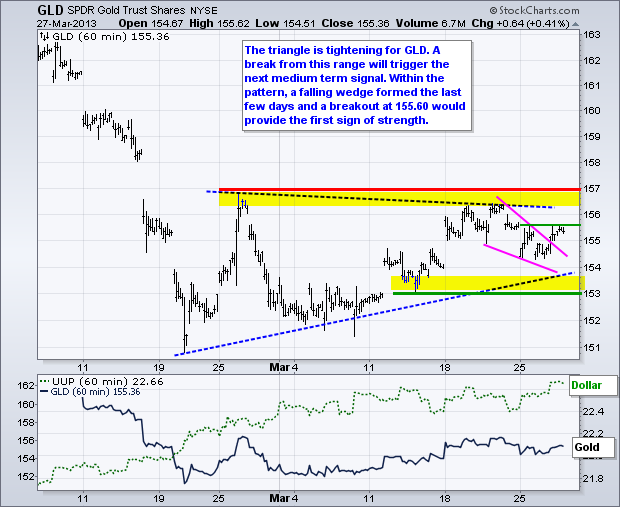
**************************************************************************
Key Reports and Events (all times Eastern):
Thu - Mar 28 - 08:30 - Jobless Claims
Thu - Mar 28 - 08:30 - GDP
Thu - Mar 28 - 09:45 - Chicago PMI
Thu - Mar 28 - 10:30 - Natural Gas Inventories
Fri - Mar 29 - 08:30 - Personal Income & Spending
Fri - Mar 29 - 09:55 - Michigan Sentiment
Charts of Interest: Tuesday and Thursday
This commentary and charts-of-interest are designed to stimulate thinking. This analysis is
not a recommendation to buy, sell, hold or sell short any security (stock ETF or otherwise).
We all need to think for ourselves when it comes to trading our own accounts. First, it is
the only way to really learn. Second, we are the only ones responsible for our decisions.
Think of these charts as food for further analysis. Before making a trade, it is important
to have a plan. Plan the trade and trade the plan. Among other things, this includes setting
a trigger level, a target area and a stop-loss level. It is also important to plan for three
possible price movements: advance, decline or sideways. Have a plan for all three scenarios
BEFORE making the trade. Consider possible holding times. And finally, look at overall market
conditions and sector/industry performance.







